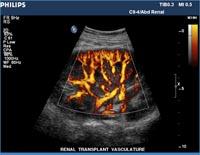
Diagnostic Medical Sonography is an imaging modality that uses sound waves to diagnosis ailments and can work in conjunction with other imaging modalities such as x-ray, MRI, and nuclear medicine studies. Personality traits and types for individuals in this career field are usually realistic, investigative and social and their personality types tend to be INFJ, INFP, ENTP and ENTJ.
Most full-time Sonographers work about 40 hours a week; they may have evening weekend hours and times when they are on call and must be ready to report to work on short notice. A person in this career tends to record and store suitable images, using a camera unit connected to the ultrasound equipment. They observe a screen during each scan to ensure the image produced is satisfactory for diagnostic purposes and will make adjustments to equipment as needed. They observe and care for patients throughout the examination to ensure their safety and comfort. Sonographers provide oral or written summaries of any technical findings to the physician for medical diagnosis. They operate ultrasound equipment to produce and record images of the motion, shape and composition of blood, organs, tissues and bodily masses. Sonographers will select appropriate equipment settings and adjust the patient’s positions to obtain the best sites and angles. Skills that are required in this field include operating medical diagnostic equipment, collecting and recording medical information, observing and analyzing physical problems, preparing case reports, working as a member of a health services team.
There are several avenues for entry into the field of Diagnostic Medical Sonography. Sonographers may train in hospitals, vocational-technical institutions, colleges or universities, or the Armed Forces. Some training programs prefer applicants with experience in other healthcare professions or high school graduates with courses in mathematics, health, and science. Colleges and universities offer formal training in both two-year and four-year programs, resulting in either an associate or a bachelor's degree. Two-year programs are the most prevalent. Coursework includes classes in anatomy, physiology, instrumentation, basic physics, patient care, and medical ethics. A few one-year programs that typically result in a vocational certificate are also accepted as proper education by employers. These programs are usually useful only for workers that are already employed in a healthcare occupation and who seek to increase their marketability by training in Sonography. For acceptance in the Sonography program at Santa Fe College, you must complete and receive an A.S. in Radiography or CVT. You can also be a graduate in an accredited bachelor’s course as well. Sonographers should obtain an AART or ARDS certification as more companies are now requiring these. AART certifications are usually best and must be kept updated throughout the years. The median annual wage of Diagnostic Medical Sonographers was $61,980 in May 2008. The middle fifty percent of Sonographers earned wages between $52,570 and $73,680 a year. The lowest ten percent earned less than $43,600, and the highest ten percent earned more than $83,950. Median annual wages of Diagnostic Medical Sonographers in May of 2008 were $62,340 in offices of physicians and $61,870 in general medical and surgical hospitals.
Employment in this field is expected to increase by about eighteen percent through 2018 which is faster than the average for all other occupations. As the population continues to age, there will be an increasing demand for diagnostic imaging. Additional job growth is expected as healthcare providers increasingly utilize ultrasound imaging as a safer and more cost-effective alternative to radiological procedures. Ultrasound imaging technology is expected to evolve rapidly and many new Sonography procedures will evolve, enabling Sonographers to scan and image areas of the body where ultrasound has not traditionally been used. Hospitals will remain the principal employer of Diagnostic Medical Sonographers; however, employment is expected to grow more rapidly in offices of physicians and in medical and diagnostic laboratories. Health care facilities such as these are expected to increase in number because of the strong shift toward outpatient care, encouraged by third-party payers and made possible by technological advances and less expensive ultrasound equipment that permit more procedures to be performed outside of hospitals. The outlook for job opportunities should be favorable and potential for growth. Some openings will arise from the need of replacement for retired individuals in the field or leave the occupation permanently. Job opportunities will vary by geographic area. Sonographers willing to relocate will usually tend to have the best job opportunities. Sonographers with multiple specialties or multiple credentials also will have a brighter outcome as well.
In order to succeed at being a Sonographer, an enormous amount of hard work and dedication will be the key ingredient. I must set goals for myself whether they are short term goals or long terms goals. A few goals that have come into factor for myself in order to get on the right track and have a successful life will include a variety of obstacles – some of which are personal goals that I must meet in order to further my education. One of which is the addition to my family. In order to stay focused, I must seek guidance and knowledge of being a first-time mother. Adjusting to all of these changes is extremely crucial at this time in my life, and I must stay on track with my college education which is why I am no longer working at this time. In the long run, I know that concentrating on my academics will pay off more so than just working a full-time job. I have also made a list of the courses that I must complete in order to pursue the Sonography program. I know that I must complete the Radiography program before applying to the Sonography program which will take some time.
My five year plan will consist of having Zoe in school and working part-time as a Sonographer. I plan to either stay in the surrounding areas or possibly moving to California. I think it will really depend on the job market as well as the cost of living in both areas to see if it will be feasible. Family is one of the most important things in my life, and I want to make sure that our little girl will be happy in successful in the life we have given her. Seeing Chris running a successful mechanic shop means the most to me as well, and I would like to be able to support him to the fullest. He was there for me when I needed him the most, and I tend to do the same for him. I feel that my fiancé and I have a wonderful future ahead of us and we have discussed what our goals are in life. He knows that my goals are directed towards our family more so than my career. This is why I have chosen Sonography as my career path. Before we found out about my pregnancy with Zoe, I wanted to be a Forensic Lab Technician. I knew that this career wasn’t going to work out in the long run so I decided to choose a career that has set hours and less demanding. I feel confident in the decisions I have made and blessed that I can be there for our daughter.



